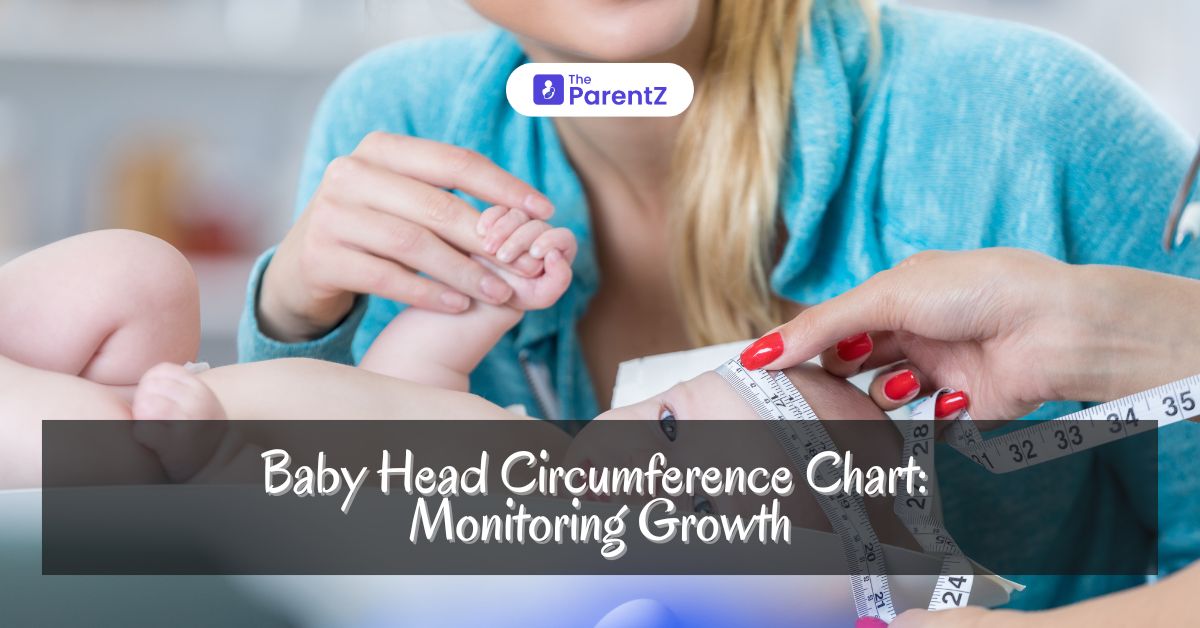Monitoring a baby’s growth is a vital part of ensuring their healthy development. One important measure is head circumference, which reflects the growth of the brain and overall development. This article explores the importance of tracking head circumference, how to use a head circumference chart, what to look for in normal and abnormal growth patterns, and tips for accurate measurement.
Introduction to Head Circumference Monitoring
Head circumference is a crucial metric in pediatric health, providing insight into the growth and development of an infant’s brain. Regular monitoring helps identify potential health issues early on, allowing for timely intervention. Healthcare providers typically measure head circumference at each well-baby visit, from birth through early childhood.
Importance of Head Circumference Measurement
The measurement of head circumference is important for several reasons:
- Brain Development: The head circumference reflects brain growth. Abnormal growth patterns can indicate potential neurological issues.
- Early Detection: Regular monitoring can detect conditions such as microcephaly (small head size) or macrocephaly (large head size), which can be associated with developmental delays or other health problems.
- Overall Growth Assessment: Along with weight and height, head circumference helps paint a comprehensive picture of a baby’s growth and development.
How to Measure Head Circumference
Accurate measurement of head circumference is essential for tracking growth correctly. Here’s how to do it:
- Equipment Needed: Use a flexible, non-stretchable measuring tape.
- Positioning the Tape: Place the tape measure around the largest part of the head, typically just above the eyebrows and ears, and around the back of the head at the occipital prominence.
- Taking the Measurement: Ensure the tape is snug but not compressing the skin. Read the measurement to the nearest 0.1 centimeter or 1/8 inch.
- Recording: Record the measurement and plot it on a head circumference chart to track growth over time.
Using a Head Circumference Chart
Head circumference charts, often provided by organizations such as the World Health Organization (WHO) or the Centers for Disease Control and Prevention (CDC), allow parents and healthcare providers to track an infant’s growth relative to standardized percentiles.
Steps to Use a Head Circumference Chart
- Find the Chart: Obtain a head circumference chart appropriate for your baby’s age and gender.
- Locate the Age: Find your baby’s age along the bottom axis of the chart.
- Mark the Measurement: Plot the head circumference measurement on the vertical axis.
- Interpret the Percentiles: Determine which percentile your baby’s measurement falls into. For example, a measurement in the 50th percentile means that 50% of babies have a smaller head circumference, and 50% have a larger one.
Normal Growth Patterns
Head circumference growth patterns typically follow a predictable trajectory:
- Newborn Period: The average head circumference at birth is about 35 cm (13.8 inches).
- Rapid Growth: Significant growth occurs in the first six months, with the head circumference increasing by about 2 cm per month.
- Slowing Growth: From six months to one year, the growth rate slows to about 1 cm per month.
- Steady Growth: After the first year, growth continues at a slower pace, approximately 0.5 cm per month, until about age two.
Identifying Abnormal Growth Patterns
While variations are normal, significant deviations from typical growth patterns can indicate health issues:
- Microcephaly: Characterized by a head circumference significantly below the average for the baby’s age and sex. It can be associated with genetic conditions, infections during pregnancy, or other environmental factors.
- Macrocephaly: Defined as a head circumference significantly above the average. It can result from genetic conditions, excessive fluid accumulation (hydrocephalus), or other medical issues.
- Growth Faltering: A notable slowdown or acceleration in head circumference growth should be evaluated by a healthcare provider.
Factors Influencing Head Circumference
Several factors can influence head circumference:
- Genetics: Family history can play a significant role in the size and growth rate of an infant’s head.
- Nutrition: Adequate nutrition is crucial for brain development and overall growth.
- Health Conditions: Medical issues such as hydrocephalus, craniosynostosis (premature fusion of skull bones), and infections can affect head growth.
- Birth Factors: Premature birth or low birth weight can influence initial head circumference measurements and growth patterns.
When to Consult a Healthcare Provider
It’s important to seek medical advice if:
- Abnormal Measurements: Your baby’s head circumference is consistently above the 97th percentile or below the 3rd percentile.
- Sudden Changes: There is a rapid increase or decrease in head circumference growth rate.
- Developmental Concerns: If you notice developmental delays or other symptoms alongside abnormal head growth.
Early consultation with a healthcare provider can help diagnose potential issues and develop a management plan if necessary.
Conclusion
Monitoring a baby’s head circumference is a vital aspect of tracking their growth and development. By understanding how to measure and interpret head circumference data, parents and healthcare providers can ensure timely interventions if needed. Regular measurements, plotted on a standardized head circumference chart, provide valuable insights into a baby’s health. Early detection of abnormal growth patterns can significantly improve outcomes, making head circumference an essential metric in pediatric care. Always consult with healthcare professionals if there are any concerns about your baby’s growth to ensure they receive the best possible care.







